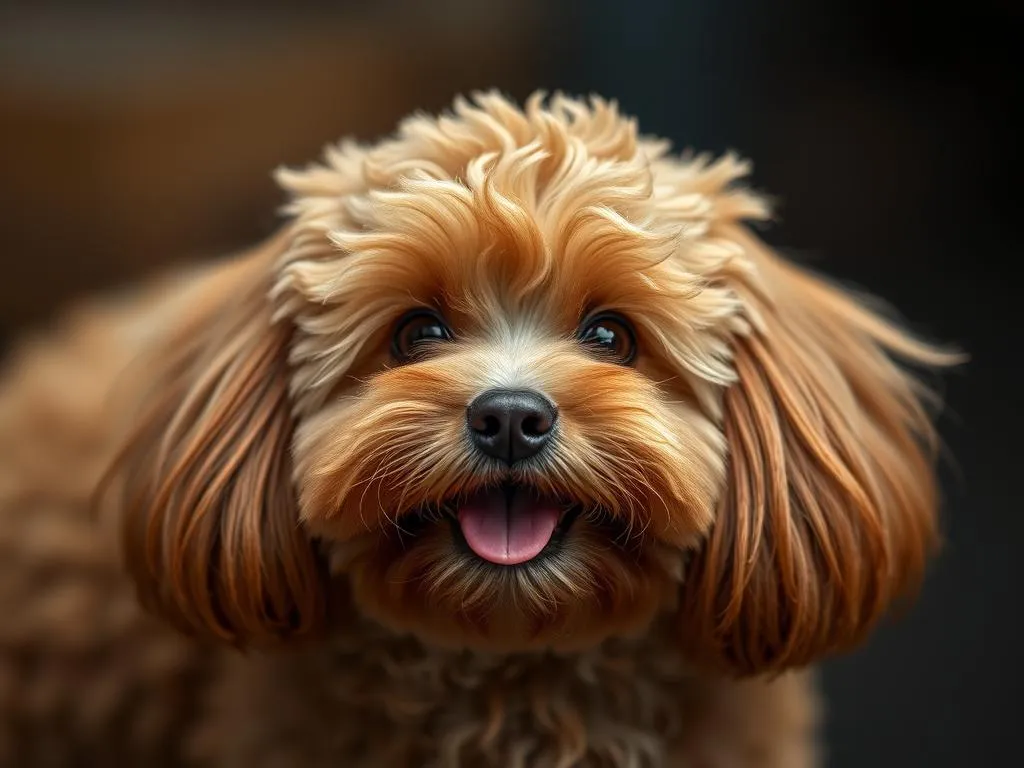
Introduction
Dog breeds come in various shapes, sizes, and temperaments, each playing a special role in the lives of their owners. Among the many hybrid breeds gaining popularity, the Maltipoo stands out for its affectionate nature and charming appearance. A cross between the Maltese and the Poodle, Maltipoos have captured the hearts of dog lovers everywhere. Understanding specific breeds like the Maltipoo is essential for potential dog owners, as it helps them make informed decisions about their new companions. This article will delve into the fascinating world of Maltipoos, covering their characteristics, care, training, and much more.
Understanding Maltipoos
Definition of Maltipoo
A Maltipoo is a delightful hybrid breed, resulting from the crossing of the Maltese with a Poodle. This combination brings together the charming qualities of both parent breeds. Hybrid breeds like the Maltipoo often inherit desirable traits from both sides, making them unique and appealing to many families. Maltipoos are known for their playful demeanor, intelligence, and loyalty, making them excellent companions.
History of Maltipoos
The Maltipoo breed emerged in the late 20th century, primarily in the United States. As demand for smaller, hypoallergenic dog breeds increased, breeders began crossing Maltese and Poodles to create a hybrid that possessed the best traits of both breeds. Since then, Maltipoos have gained significant popularity, thanks to their friendly nature and adaptability to various living situations.
Physical Characteristics
Size and Weight
Maltipoos are small dogs, typically weighing between 5 to 20 pounds. The size of a Maltipoo can vary based on the size of the Poodle parent, which can be standard, miniature, or toy. Generally, the average Maltipoo stands between 8 to 14 inches tall. The weight expectations differ based on their generation:
- F1 Maltipoo: First-generation offspring from a Maltese and a Poodle.
- F1b Maltipoo: A cross between an F1 Maltipoo and a Poodle.
- F2 Maltipoo: A cross between two F1 Maltipoos.
Coat Type and Colors
Maltipoos have a soft, fluffy coat that can be curly, wavy, or straight, depending on the genes inherited from their parents. Their coat is often low-shedding, making them a popular choice for individuals with allergies. Common color variations include:
- White
- Cream
- Apricot
- Brown
- Black
Lifespan and Health Considerations
The average lifespan of a Maltipoo is around 12 to 15 years. However, like all breeds, they are prone to certain health issues, including:
- Dental problems
- Patellar luxation
- Hip dysplasia
- Allergies
Regular veterinary check-ups and a healthy diet can help mitigate these risks.
Temperament and Personality
General Temperament
Maltipoos are known for their friendly and affectionate nature. They are often described as playful, intelligent, and social. While their temperament largely depends on genetics, socialization also plays a crucial role in their behavior. Early exposure to different environments, people, and pets can help shape a well-adjusted Maltipoo.
Socialization and Interaction
Socializing your Maltipoo is vital for fostering a well-rounded personality. They thrive on interaction with both humans and other pets. Engaging them in playdates, dog parks, and training classes can significantly enhance their social skills. Here are a few tips for nurturing a well-adjusted Maltipoo:
- Introduce them to various environments early.
- Expose them to different sounds and sights.
- Encourage positive interactions with other animals.
Compatibility with Families
Maltipoos are particularly well-suited for families, including those living in apartments or smaller homes. Their affectionate nature makes them great companions for children, as they enjoy playing and being active. Moreover, their adaptability allows them to coexist peacefully with other pets, making them an excellent addition to multi-pet households.
Care Requirements
Grooming Needs
Maltipoos require regular grooming to maintain their coat health and prevent matting. Brushing should be done at least 2-3 times a week, and they may require professional grooming every 4 to 6 weeks. Here are some grooming tips:
- Use a slicker brush to remove tangles.
- Bathe them every 4 to 6 weeks to keep their coat clean.
- Trim their nails regularly to prevent overgrowth.
Exercise and Activity Level
Despite their small size, Maltipoos are energetic and require daily exercise. A minimum of 30 minutes of exercise per day is recommended, which can include walks, playtime, or interactive games. Some fun activities include:
- Fetch
- Hide and seek
- Agility training
Nutrition
Proper nutrition is crucial for a Maltipoo’s health. High-quality dog food formulated for small breeds is ideal. Pay attention to portion control, as Maltipoos are prone to obesity. Always consult your veterinarian for personalized dietary recommendations.
Training and Behavior
Basic Training Techniques
Training a Maltipoo can be a fun and rewarding experience, thanks to their intelligence and eagerness to please. Positive reinforcement methods, such as treats and praise, work best. Common commands to teach your Maltipoo include:
- Sit
- Stay
- Come
- Down
Addressing Behavior Issues
Like any dog, Maltipoos can exhibit behavioral challenges. Barking, separation anxiety, and chewing are common issues. Here are some tips for addressing these challenges:
- Barking: Teach the “quiet” command and reward silence.
- Separation anxiety: Gradually accustom your Maltipoo to being alone by practicing short departures.
- Chewing: Provide appropriate chew toys and discourage destructive behavior.
Importance of Consistency
Establishing routines and boundaries is essential for effective training. Consistency helps your Maltipoo understand expectations, making it easier to shape their behavior. As an owner, your role in providing guidance and support is vital in nurturing a well-behaved Maltipoo.
Maltipoo Adoption and Purchase
Where to Find Maltipoos
When considering adding a Maltipoo to your family, it’s crucial to find a reputable source. You can either adopt from shelters and rescues or purchase from responsible breeders. Look for red flags in breeders, such as:
- Lack of health clearances for parent breeds.
- Poor living conditions for the puppies.
- Inconsistent information about the breed.
Cost Considerations
The average cost of a Maltipoo can range from $1,000 to $3,000, depending on the breeder and the dog’s lineage. Additionally, ongoing expenses such as food, grooming, and veterinary care should be factored into your budget.
Preparing for a Maltipoo
Before bringing a Maltipoo home, ensure you have the necessary supplies:
- High-quality dog food
- Food and water bowls
- A comfortable bed
- Toys for mental stimulation
- Grooming tools
Creating a safe and welcoming environment will help your new Maltipoo adjust comfortably.
Conclusion
Maltipoos are delightful companions that bring joy and love to their families. With their friendly temperament, adaptability, and unique appearance, they have become a favored choice among dog lovers. As with any breed, owning a Maltipoo comes with responsibilities, including proper care, training, and socialization. By understanding the essential facts about Maltipoos, potential owners can make informed decisions that lead to a fulfilling relationship with their furry friends.
FAQs about Maltipoos
-
Are Maltipoos hypoallergenic?
Yes, Maltipoos are often considered hypoallergenic due to their low-shedding coats. However, individual reactions may vary. -
How much do Maltipoos shed?
Maltipoos typically shed very little, making them suitable for allergy sufferers. -
What is the best age to adopt a Maltipoo?
The best age to adopt a Maltipoo is around 8 to 12 weeks, as this is when they are most receptive to socialization and training.
Understanding these facts about Maltipoos allows potential owners to appreciate the breed’s unique qualities and prepare for the joys and responsibilities of dog ownership.









